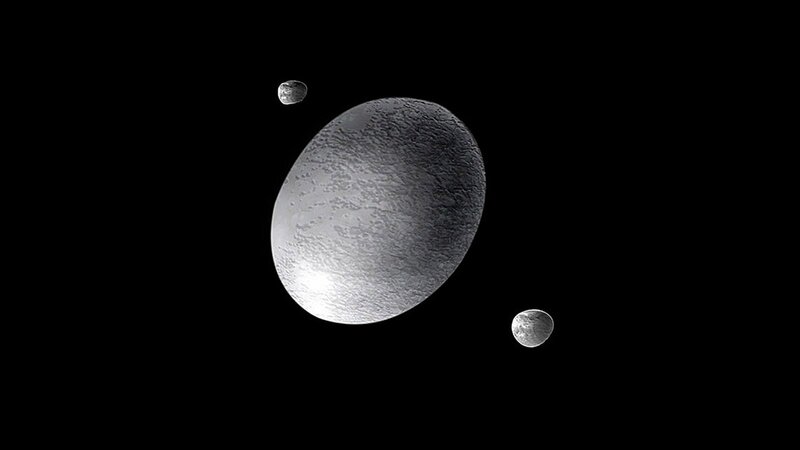The Kuiper Belt, the donut-shaped ring of icy bodies that stretches far beyond Neptune’s orbit, is home to some of the strangest objects in our solar system. Inside this icy region, there are trillions of comets, asteroids, and heavenly remnants leftover from the earliest days of our solar system, some of which many humans may already be familiar with, like Pluto, Eris, and Makemake. Yet one of its most interesting oddities is the dwarf planet, Haumea. Though it was discovered less than two decades ago, information about the dwarf planet is sparse as Earth-based telescopes have a hard time making precise measurements because of how distant it is. But the little we do know about Haumea suggests that it is an extremely strange and important entity. Shaped almost like a deflated football, the planet spins faster than anything else of its size, whirling on its axis in only four hours. Besides having two moons, Haumea also has a very faint ring system and is covered almost exclusively in crystalline water ice, making it an excellent candidate to investigate whether it might have once hosted life.



 Science
Science Astronomy
Astronomy Space
Space


